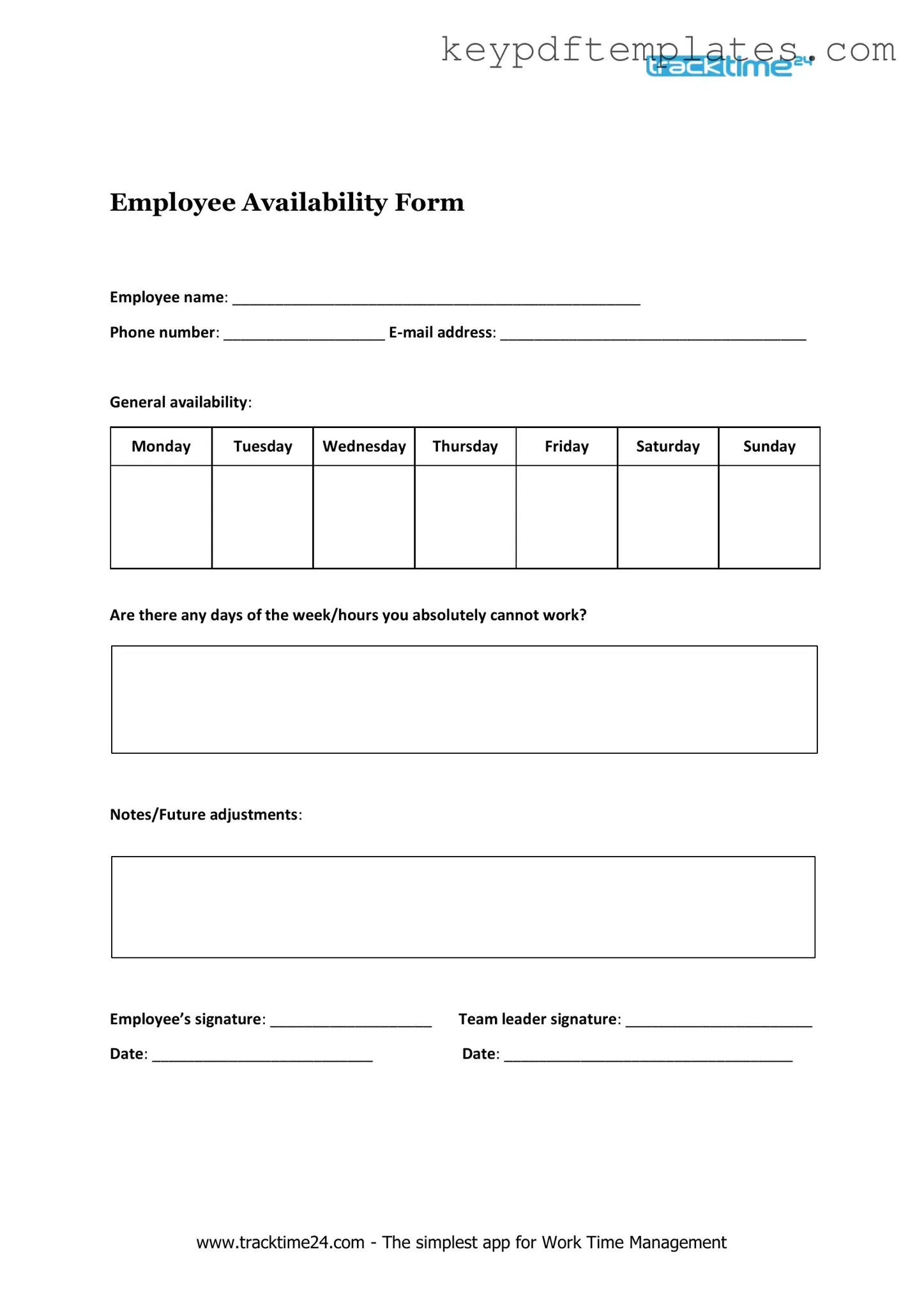Get Employee Availability Form
The Employee Availability form is a document used by employers to gather information about when employees are available to work. This form helps in scheduling shifts and ensuring that staffing needs are met effectively. By understanding employee preferences and constraints, organizations can create a more balanced work environment.
Modify Document Online
